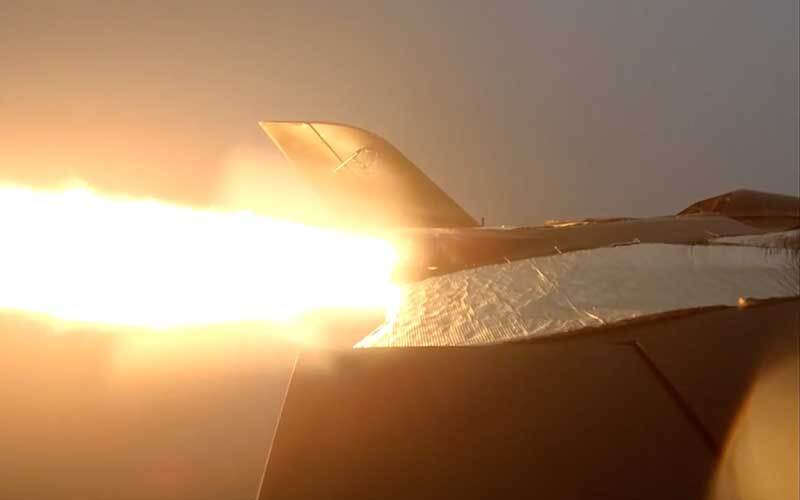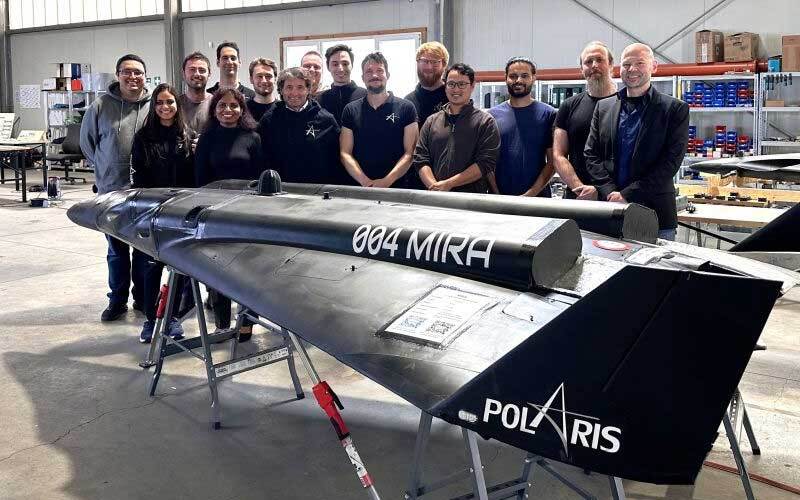13.11.2024

Credit: POLARIS Spaceplanes
Germany’s POLARIS Spaceplanes has successfully completed the first in-flight ignition of its MIRA II demonstrator’s aerospike rocket engine.
The five-metre-long MIRA II demonstrator is one of a pair built by the Bremen-based startup to test key systems, most notably the company’s AS-1 linear aerospike rocket engine. Alongside its 1 kN LOX/kerosene rocket engine, MIRA II is equipped with small jet engines for non-rocket-powered flight phases, such as takeoff and landing.
Testing of MIRA II began on 25 October with short flights powered by its jet engines. On 29 October, POLARIS completed a rocket-powered roll test, marking the final milestone before an in-flight ignition of the AS-1 rocket engine.
Later in the day on 29 October, MIRA II took off from Peenemünde Airport on the coast of the Baltic Sea with a takeoff mass of 229 kilograms, which represented a reduced propellant load. The vehicle flew to the ignition point over the Baltic Sea, approximately 3 kilometres away from the ground station, and once there, completed a short three-second burn of its AS-1 aerospike engine. During the short burn, MIRA II experienced an acceleration of 4 m/s².
According to the company, the engine operated at a reduced chamber pressure during the three-second burn, resulting in a fuel-rich combustion. This approach enables engineers to collect initial performance data while minimizing stress on engine components. As testing progresses, chamber pressure will be gradually increased to optimize combustion efficiency and thrust.
While the test was successful, it was not without its challenges. The vehicle’s onboard cameras showed a small leak in the LOX tank bay. However, the company added that apart from a lost access hatch, the vehicle was fine and returned to the airport, touching down safely.
What’s next for MIRA II?
According to POLARIS, the completion of the three-second burn marks the starting point of an intensive aerospike flight test programme for its MIRA II demonstrator. The company will also be looking to bring its twin, MIRA III, online which will enable redundancy and a greater degree of flexibility in testing.
The work being done on MIRA II and MIRA III will inform the development of the company’s next demonstrator, NOVA. Measuring between seven and eight metres in length, the supersonic NOVA demonstrator will be the final step before the company advances to its multipurpose spaceplane and hypersonic transport system, AURORA. With the addition of an expendable upper stage, AURORA will be capable of delivering payloads of up to 1,000 kilograms to low Earth orbit.

Quelle: European Spaceflight
